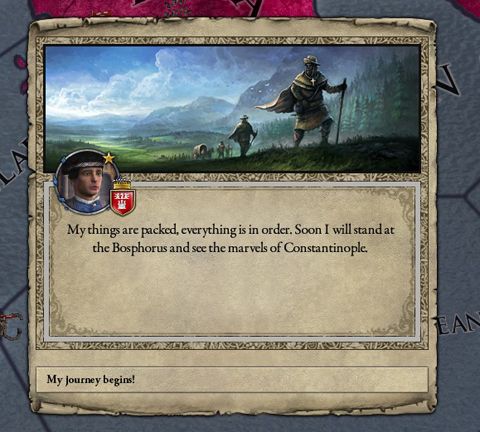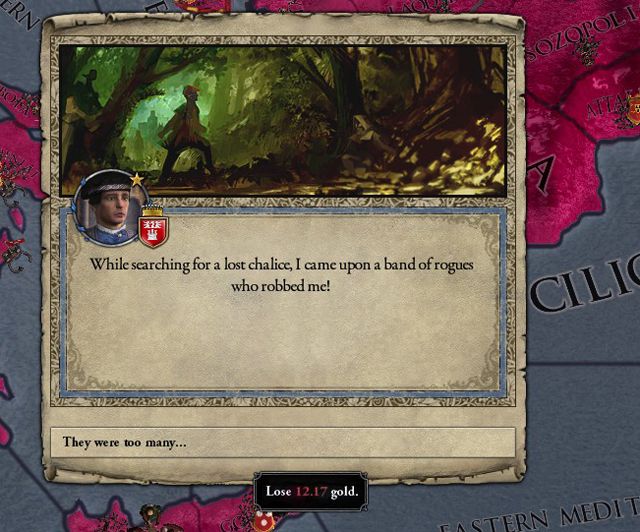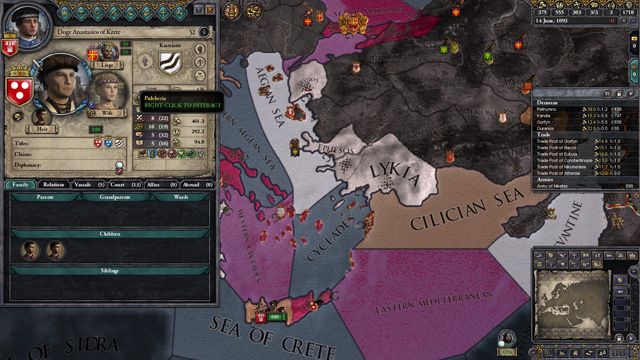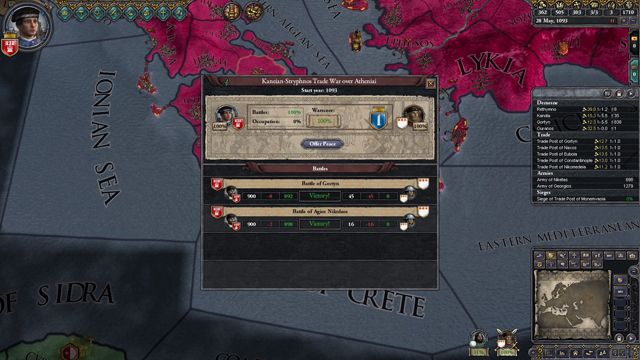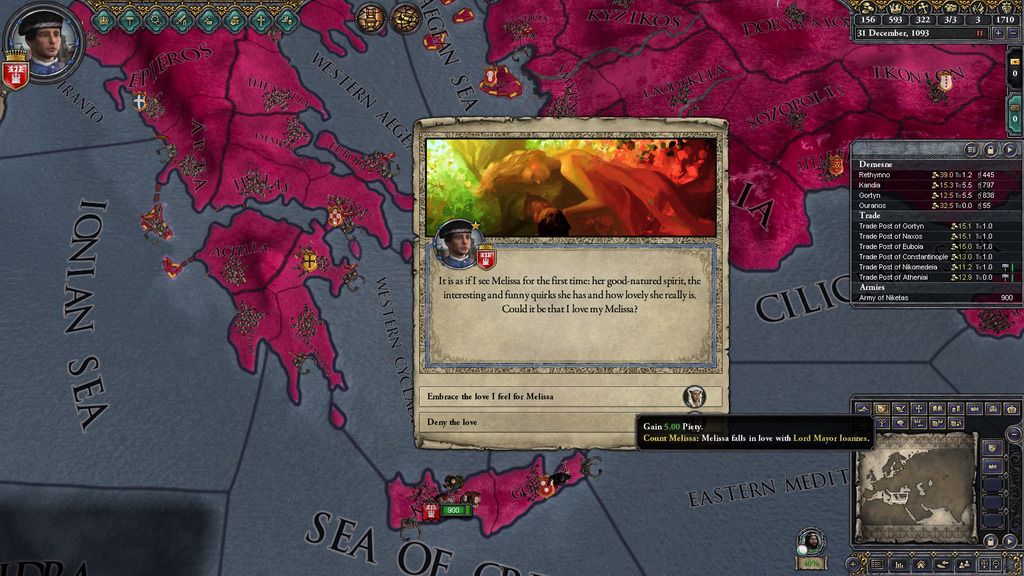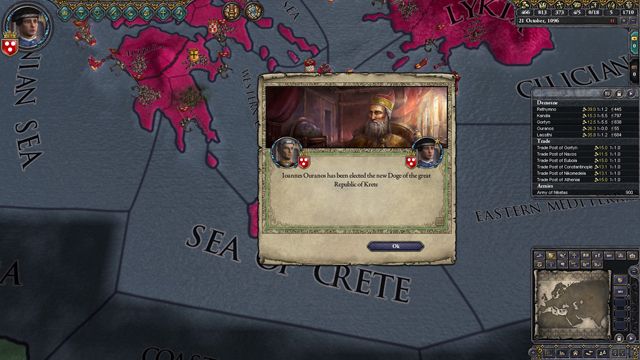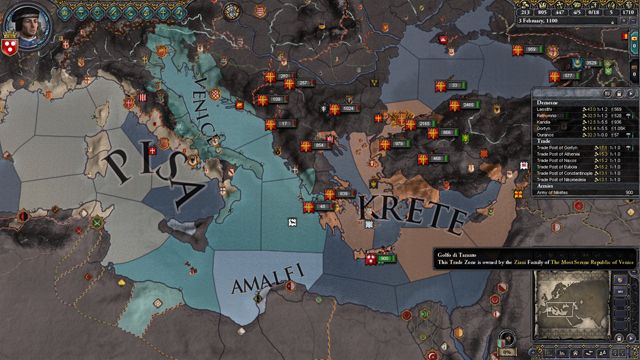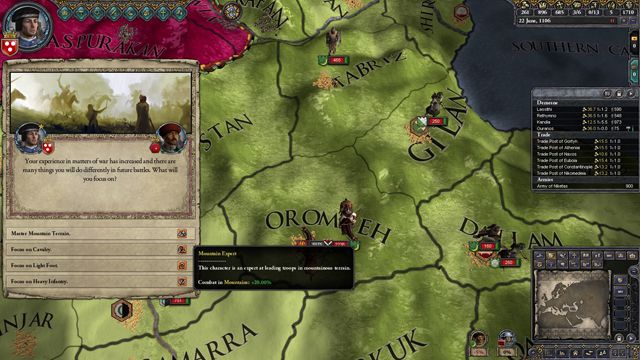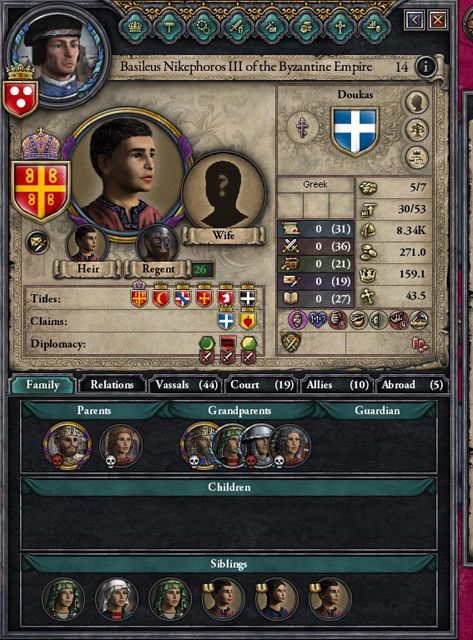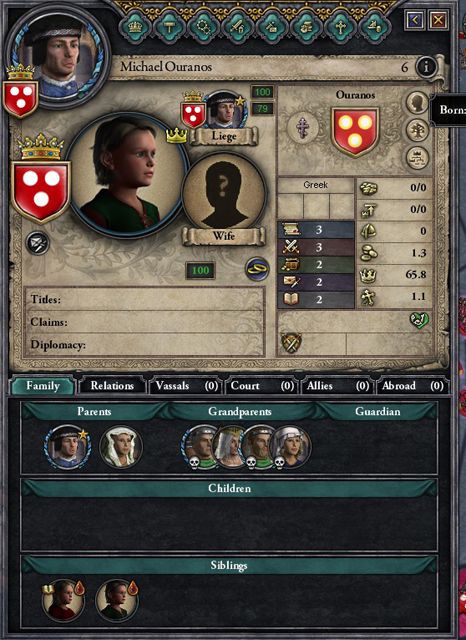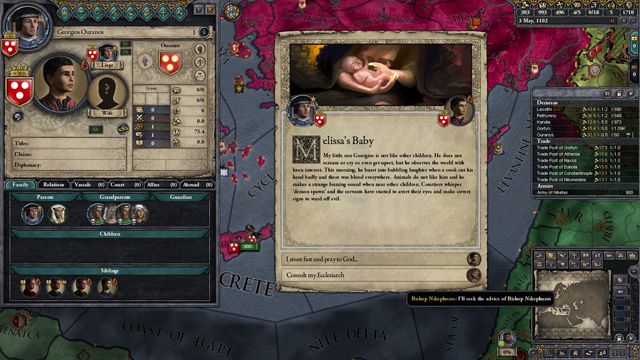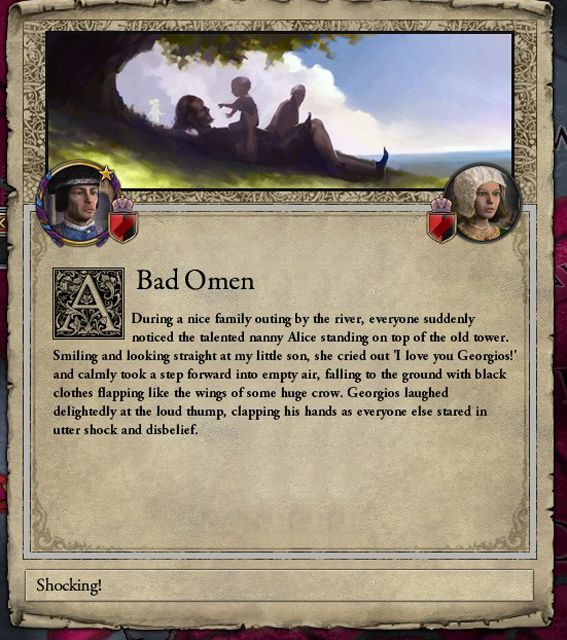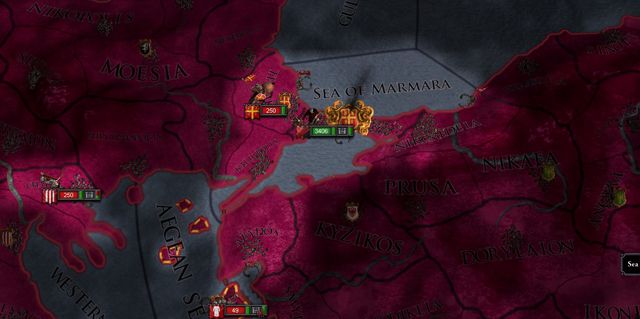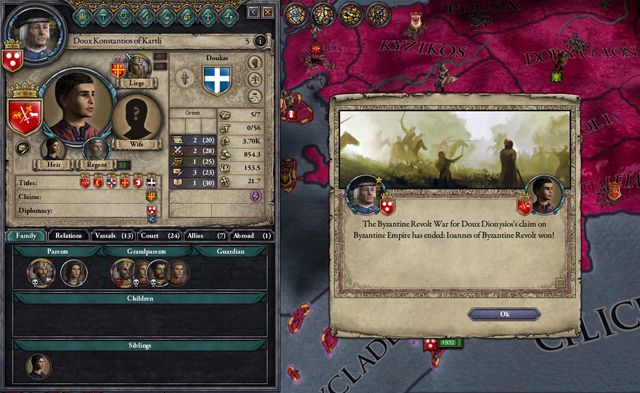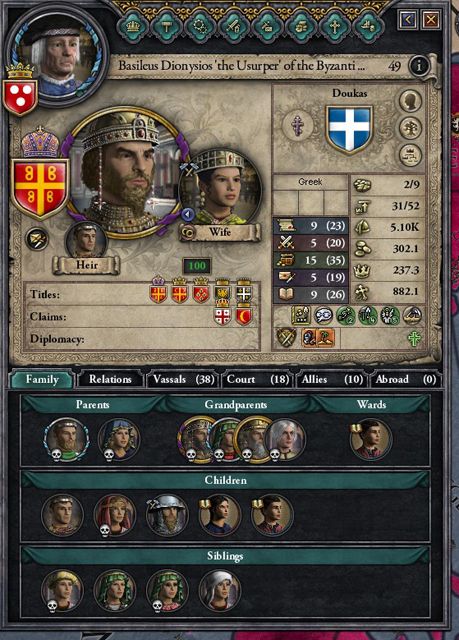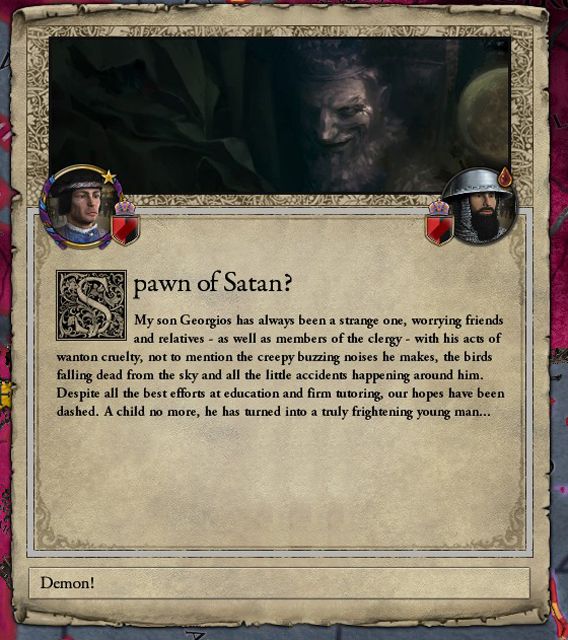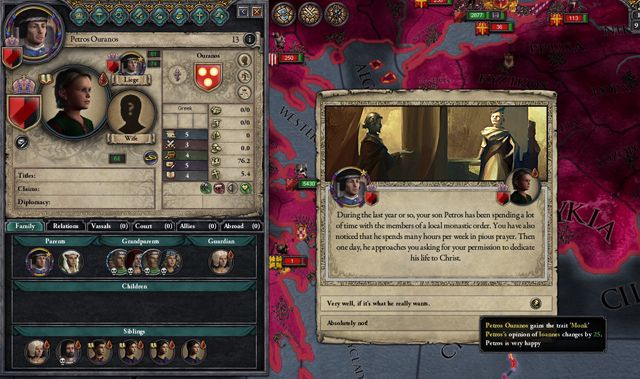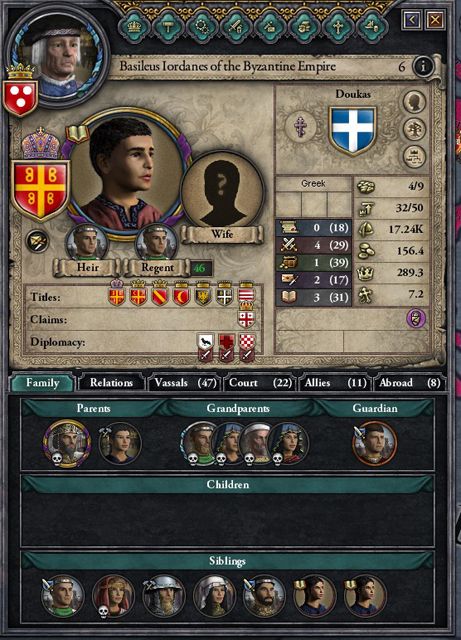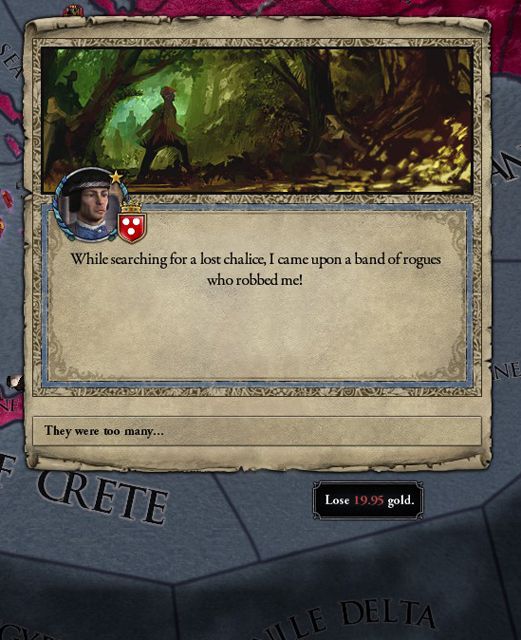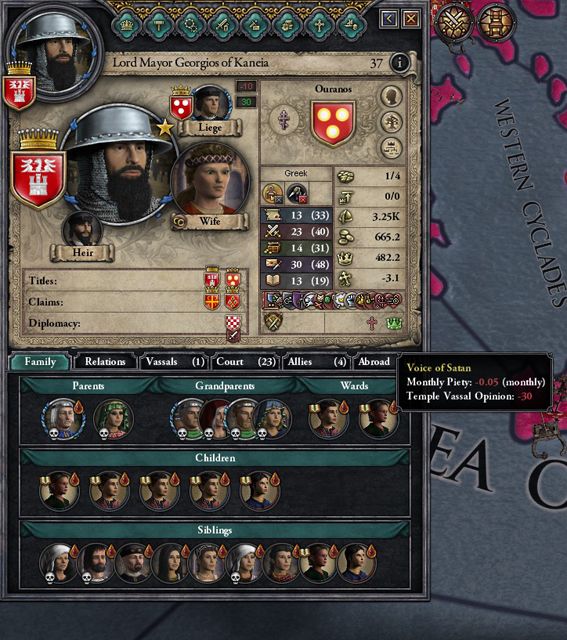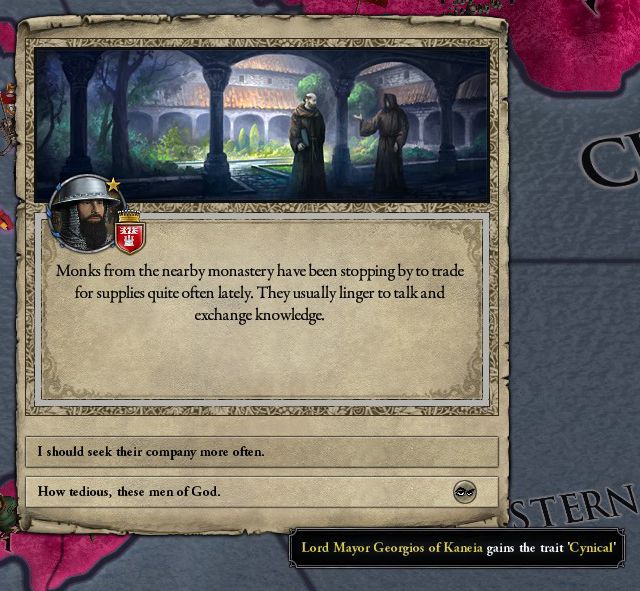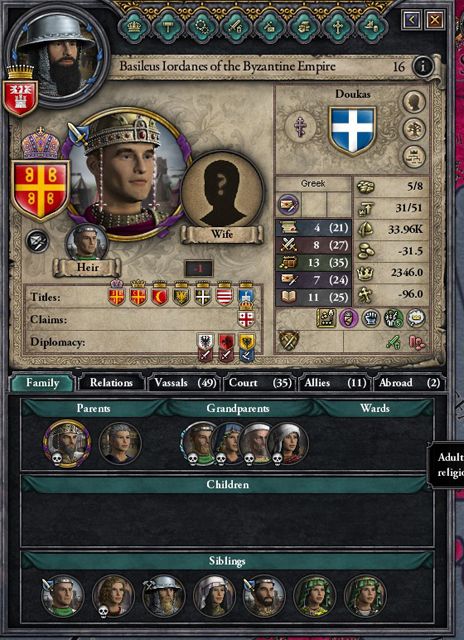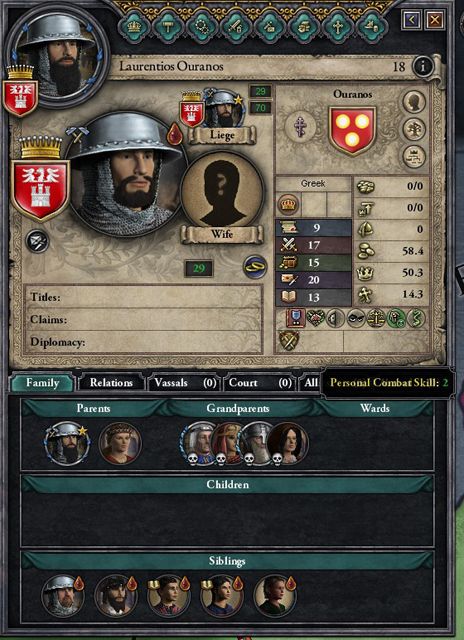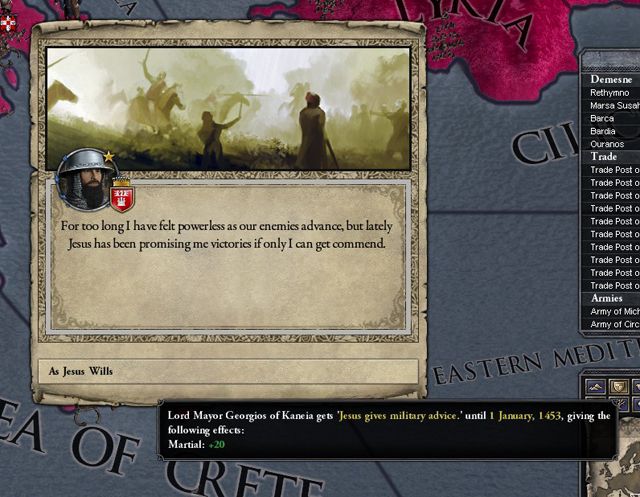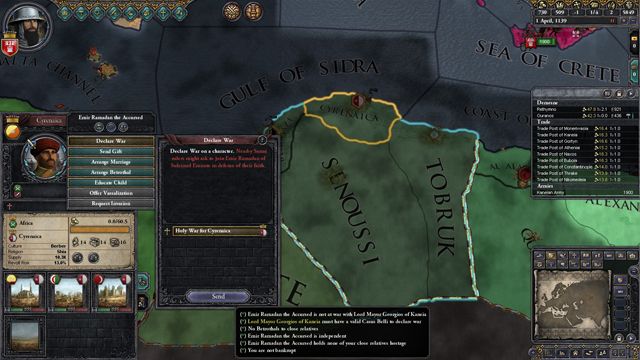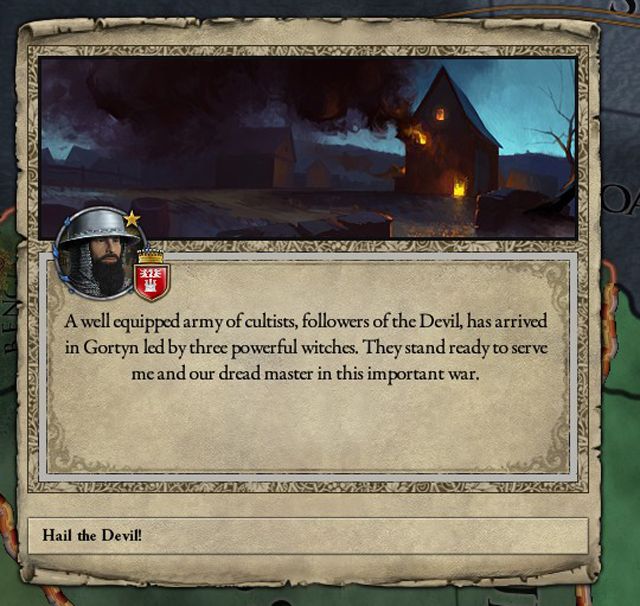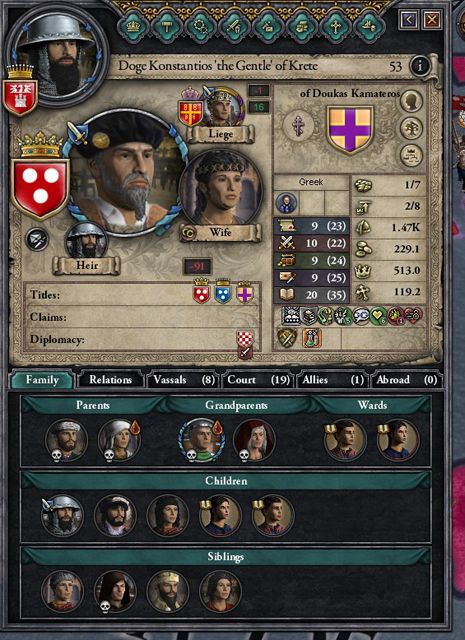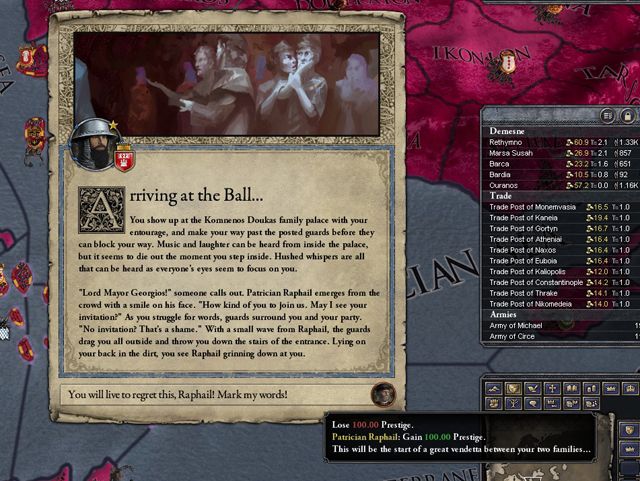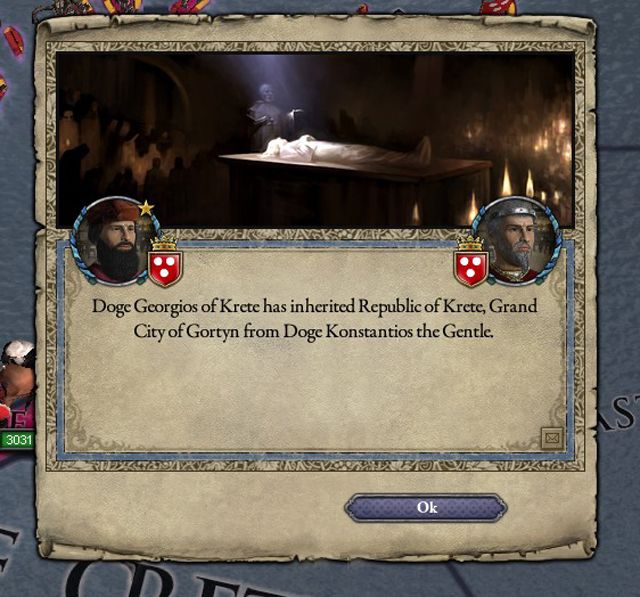KreAARting an Island Empire
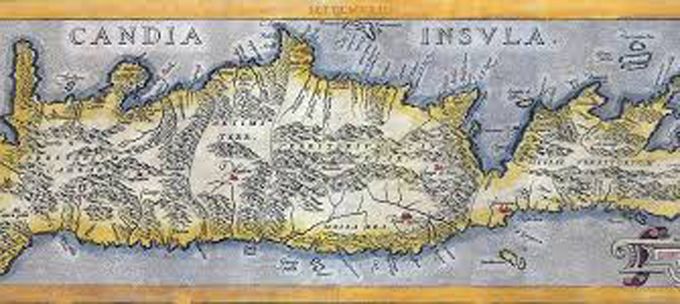
Friends, Romans, lend me your ears! As my first AAR I have chosen the small island duchy of Krete. With the subpar Doux Michael Ouranos I will seek to lead my dynasty to great achievements! Watch me succeed, fail, or maybe be a demon spawn! It all depends on how it goes.
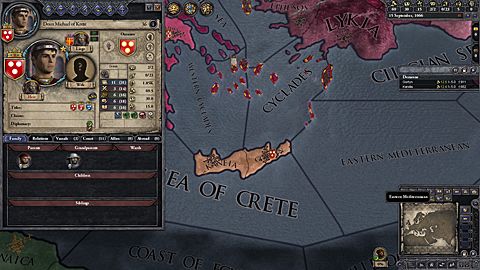
I am not a great player, so I will be playing on normal difficulty, expect mistakes.
I will not cheat, with one exception. (First one to guess what it is gets my first born child.)
I do not have Charlemagne or Way of Life.
This will mostly be a history book AAR.
As mentioned above, this is my first AAR. So any advice, comments, and adulation are much appreciated!
Laurentios (1171-1175)
Bardas I (1177-1233)
Michael II (1233- 1244)
Bardas II (1244-1261)
Ioannes III (1261-1265)
Evangelos I (1265-1270)
Nikephoros I 'The Quarreller' (1270-1310)
Georgios II 'The Wise' (1310-1347)
Romanos I (V) (1368-1395)
Artemios I (III) (1395-1416)
Evangelos II (I) (1416-1433)
Ioannes IV (II) "The Saint" (1433-1472)
My little story has finished. Thanks to everyone who bothered to read!

Friends, Romans, lend me your ears! As my first AAR I have chosen the small island duchy of Krete. With the subpar Doux Michael Ouranos I will seek to lead my dynasty to great achievements! Watch me succeed, fail, or maybe be a demon spawn! It all depends on how it goes.

I am not a great player, so I will be playing on normal difficulty, expect mistakes.
I will not cheat, with one exception. (First one to guess what it is gets my first born child.)
I do not have Charlemagne or Way of Life.
This will mostly be a history book AAR.
As mentioned above, this is my first AAR. So any advice, comments, and adulation are much appreciated!
Table of Contents
Michael I Ouranos (1066-1091)Chapter 1-1: Family and Friends
Chapter 1-2: Intrigue, Treachery, and Forgiveness
Chapter 1-3: Michael's Vision, Michael's Mistake
Ioannes 'The Fat' II (1091-1138)Chapter 1-2: Intrigue, Treachery, and Forgiveness
Chapter 1-3: Michael's Vision, Michael's Mistake
Chapter 2-1:Lord Mayor Ioannes II of Kaneia
Chapter 2-2: Doge Ioannes II
Chapter 2-3: Ioannes "The King-Maker"
Georgios 'The Fat' 'The Beast' (1138-1171)Chapter 2-2: Doge Ioannes II
Chapter 2-3: Ioannes "The King-Maker"
Laurentios (1171-1175)
Bardas I (1177-1233)
Michael II (1233- 1244)
Bardas II (1244-1261)
Ioannes III (1261-1265)
Evangelos I (1265-1270)
Nikephoros I 'The Quarreller' (1270-1310)
Georgios II 'The Wise' (1310-1347)
Chapter 11-1: Son (Great-Great-Great-Great-Great-Grandson) of the Beast
Chapter 11-2: All the Power in the World Cannot Overcome Time
Nikephoros II (1347-1368)Chapter 11-2: All the Power in the World Cannot Overcome Time
Romanos I (V) (1368-1395)
Artemios I (III) (1395-1416)
Evangelos II (I) (1416-1433)
Ioannes IV (II) "The Saint" (1433-1472)
My little story has finished. Thanks to everyone who bothered to read!
Last edited:


























